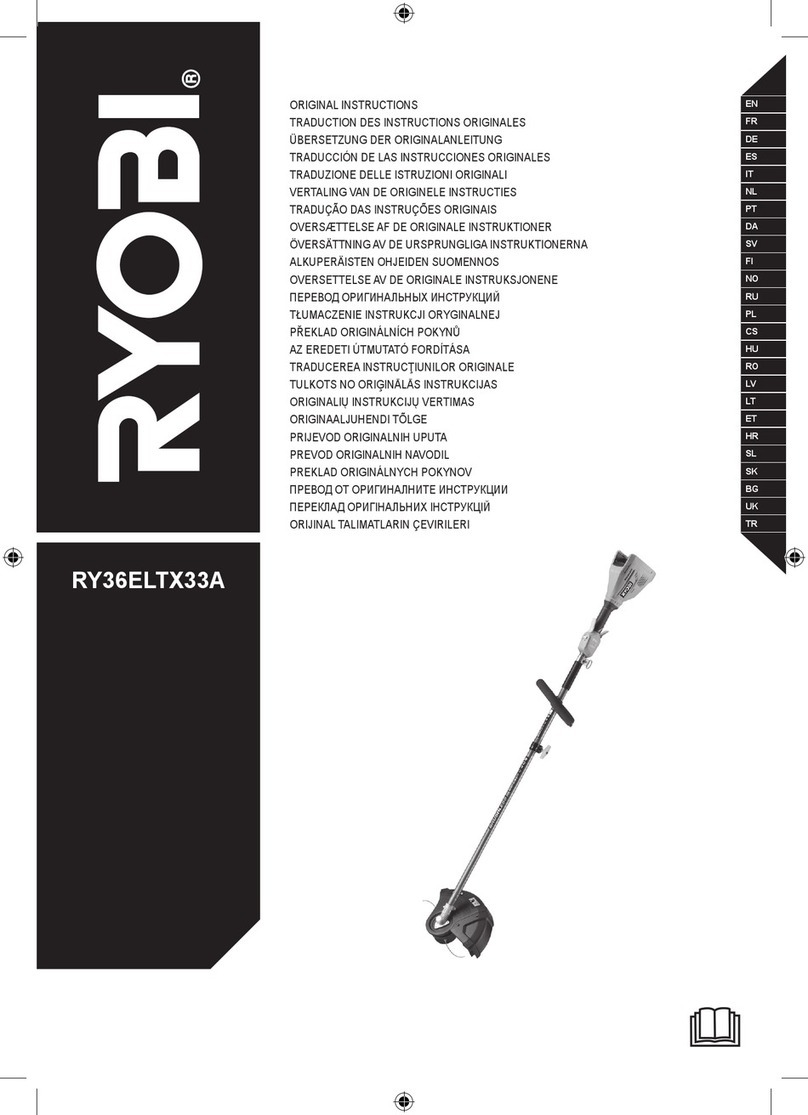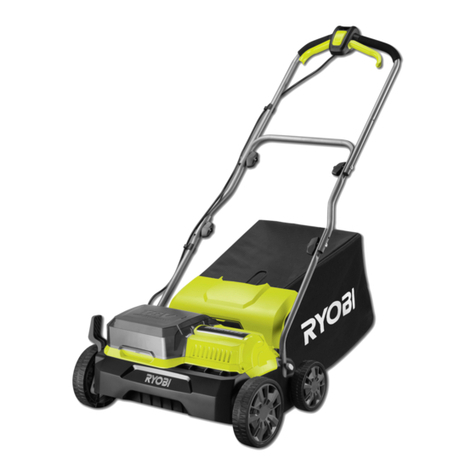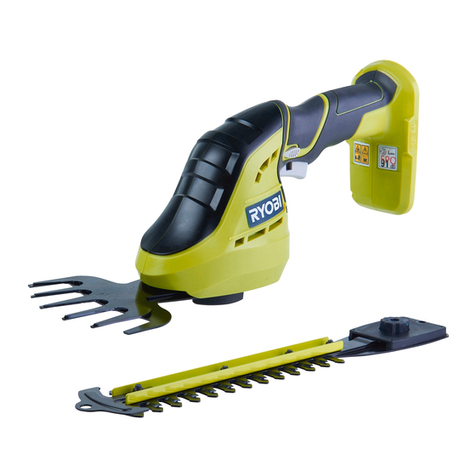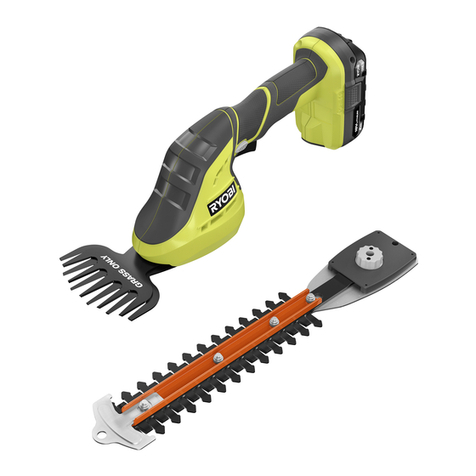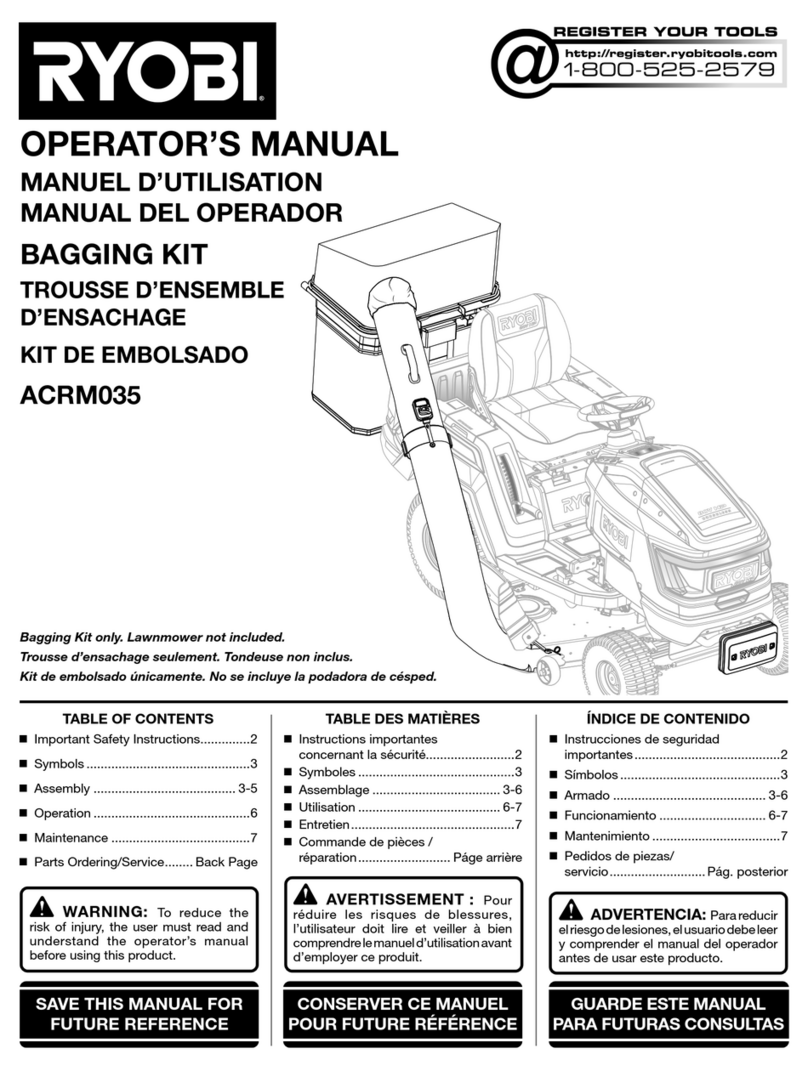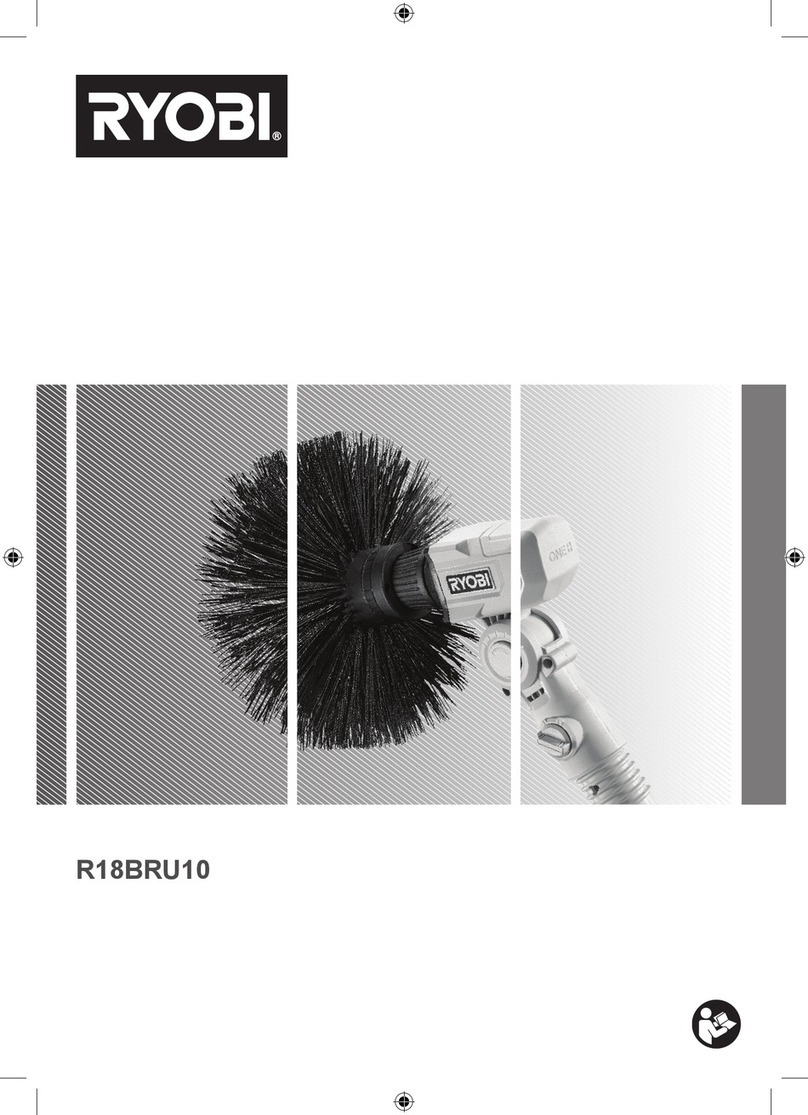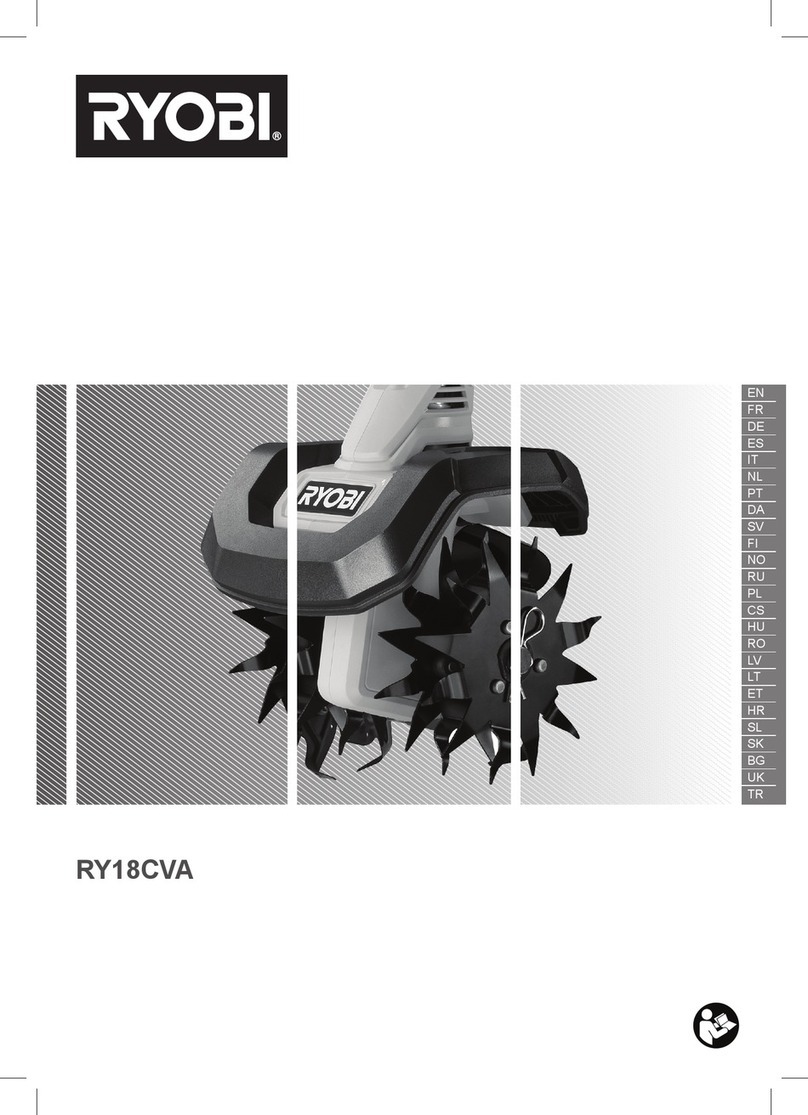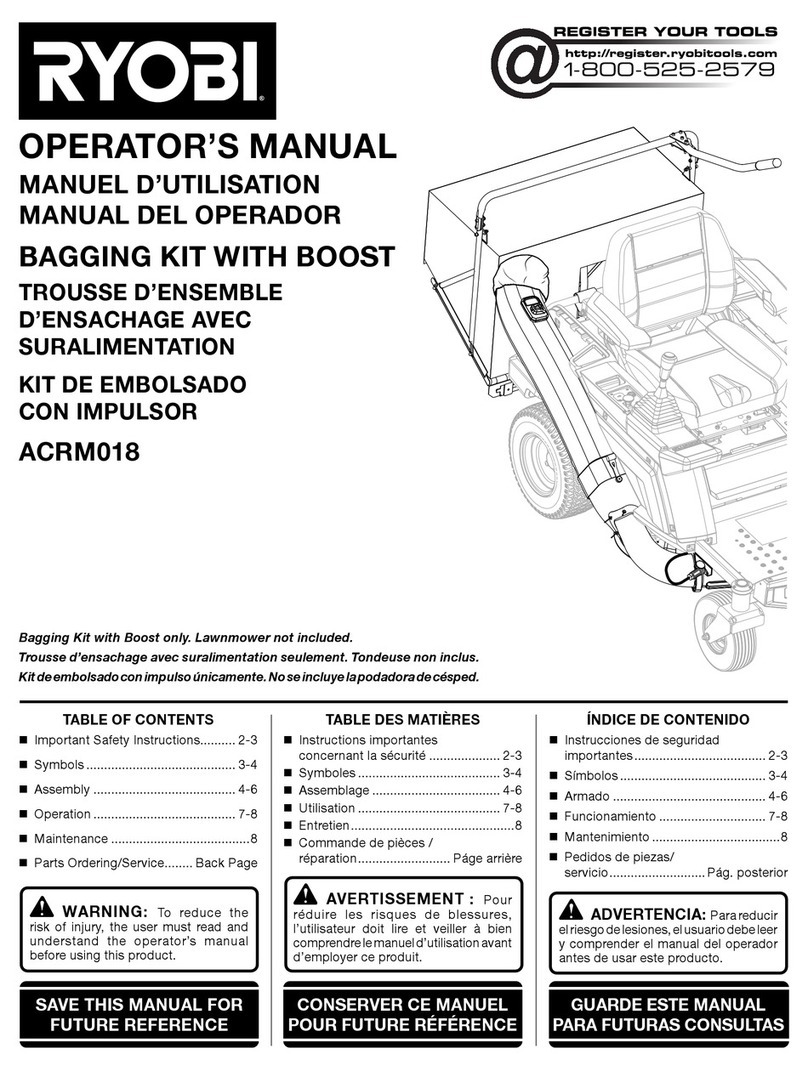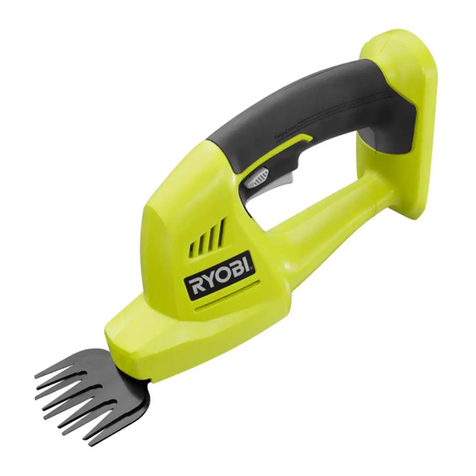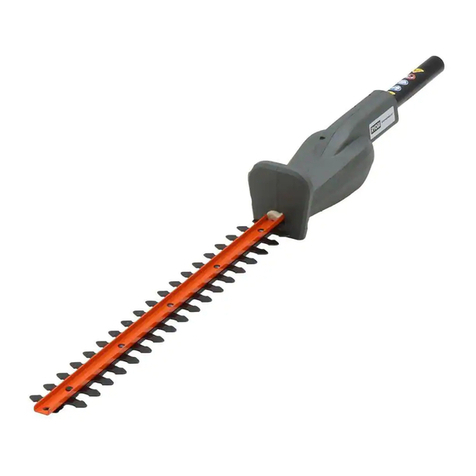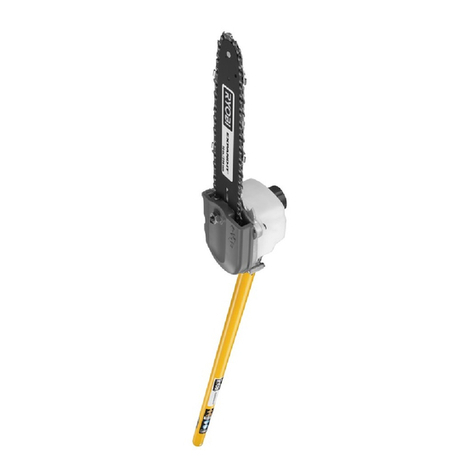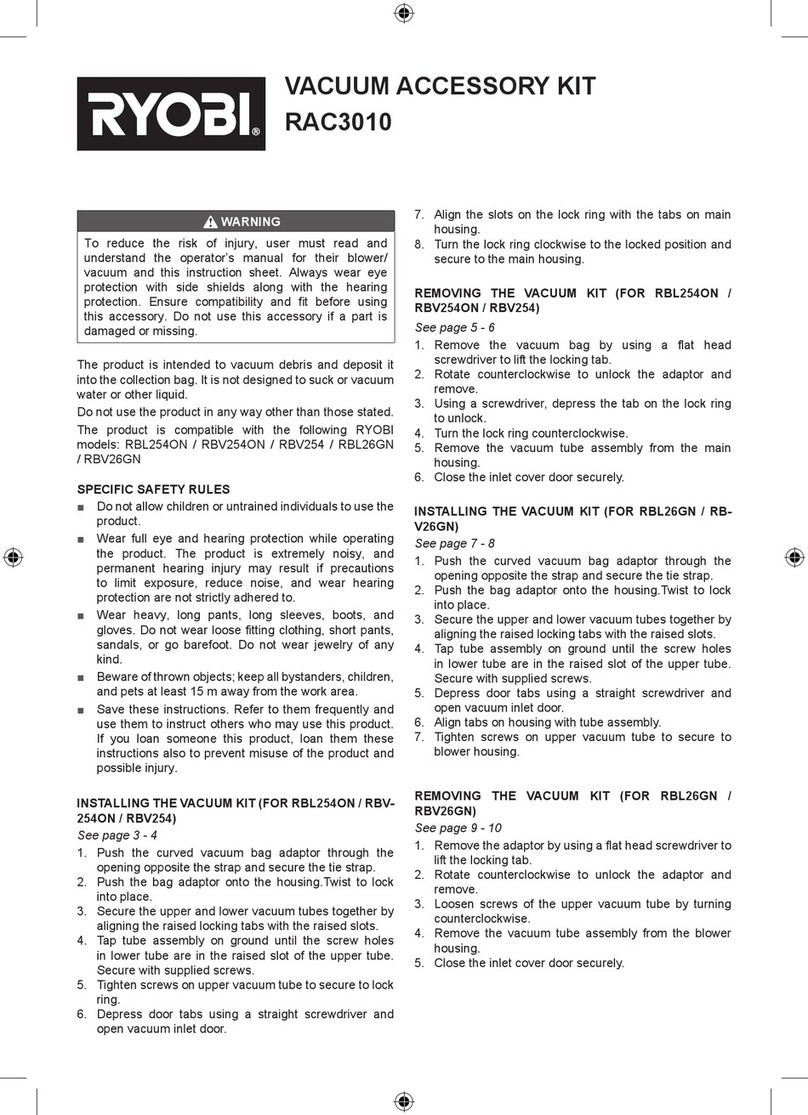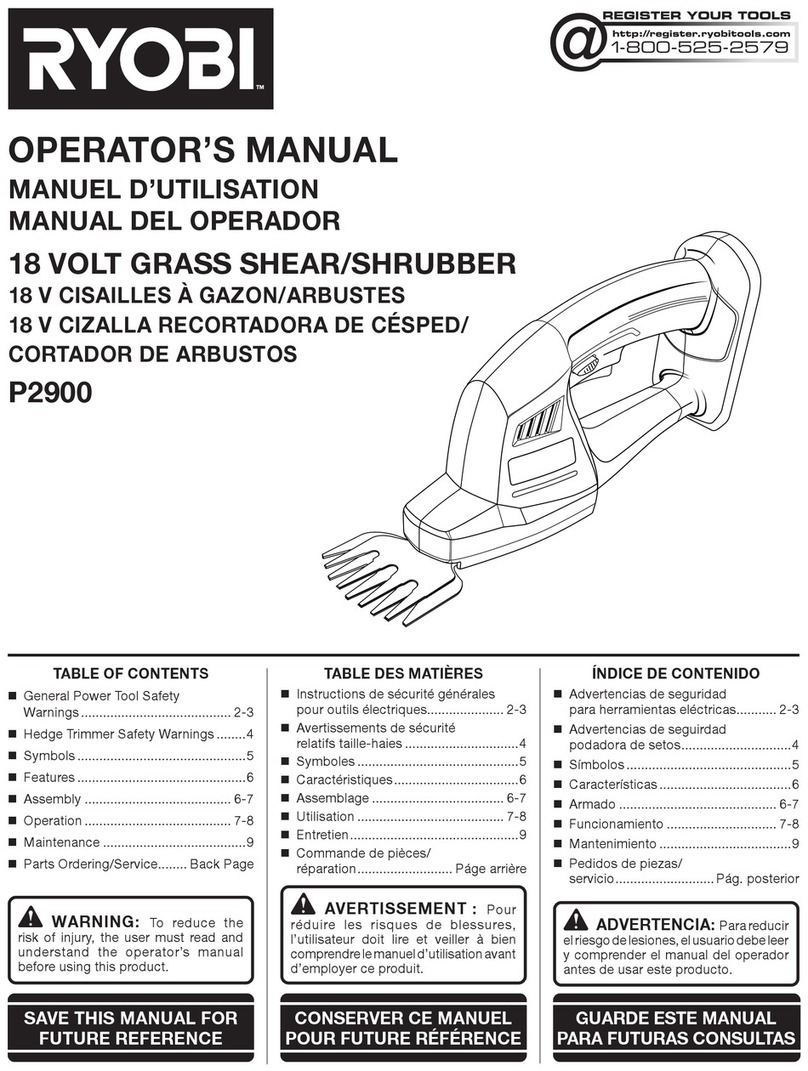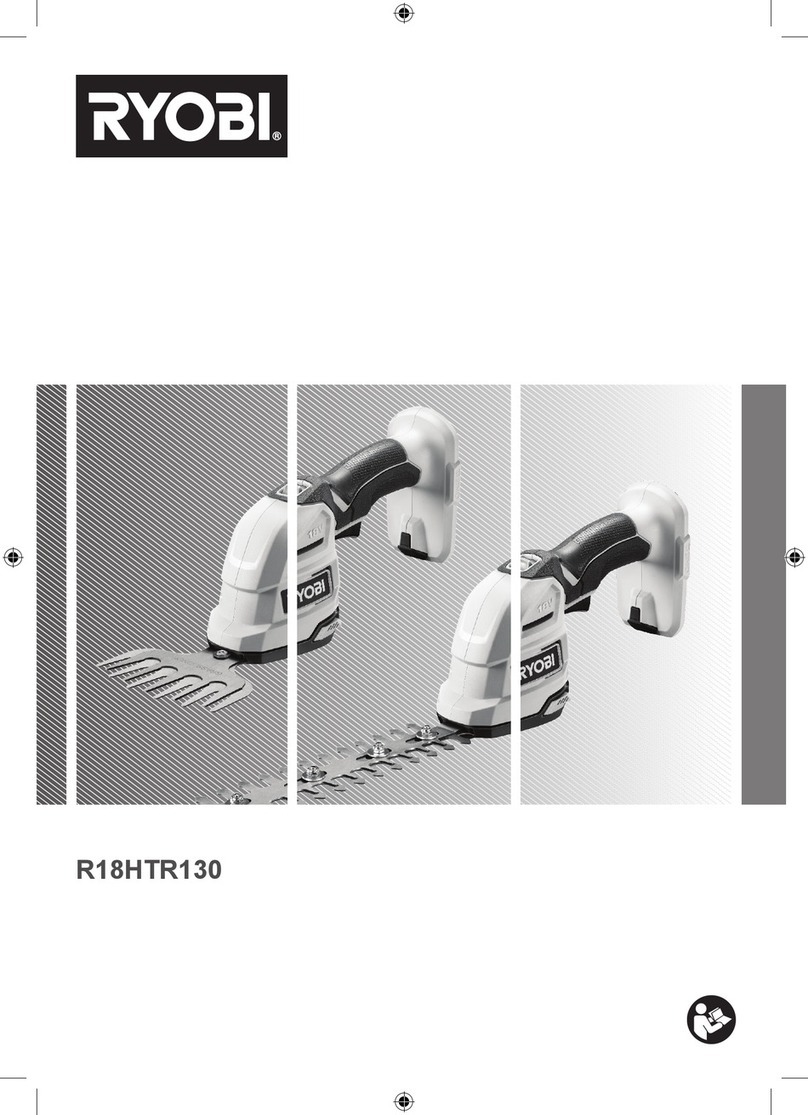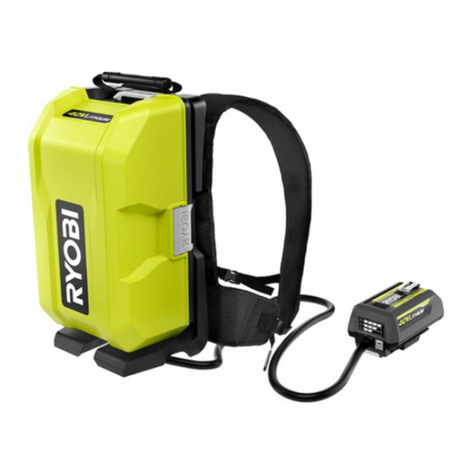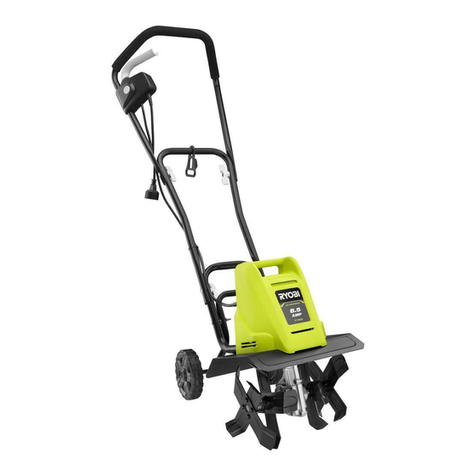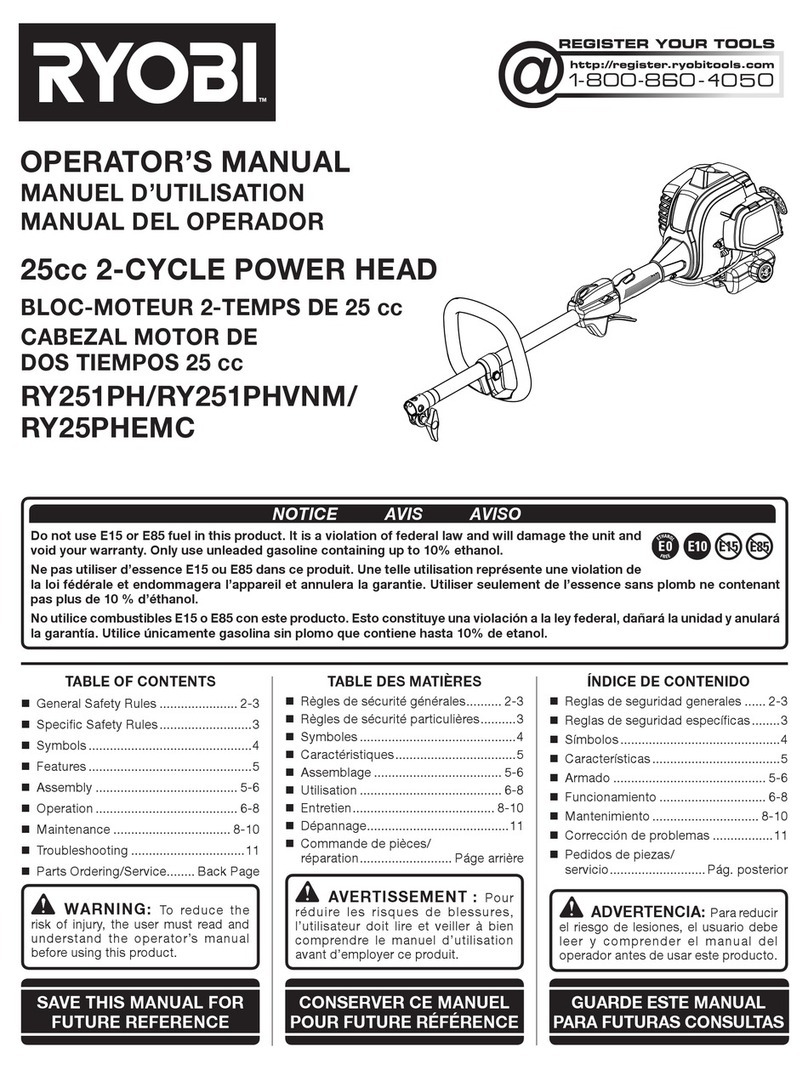
3
■Ensure all guards, handles are properly fitted, and are
in good condition.
■Do not start using the product until you have a clear
work area, secure footing, and a planned retreat path
away from the falling branches or limbs.
■Beware of the emission of lubricant mist and saw dust.
Wear mask or respirator if required.
■During operation, hold the product with both hands.
Use one hand to firmly grasp the front hand grip. Use
the other hand to grasp the rear handle and operate the
trigger release and on/off trigger.
■Hold the product by insulated gripping surfaces only,
because the saw chain may contact hidden wiring.
Saw chains contacting a “live” wire may make exposed
metal parts of the power tool “live” and could give the
operator an electric shock.
■Do not modify the product in any way or use it to power
any attachments or devices not recommended by the
manufacturer.
■Your product comes with a harness. You must use it
while operating the product. It will assist you to control
the drop of the product after the cut is completed. It will
also help support the weight of the product during use
and while moving between pruning positions.
■Identify the quick release mechanism and practice
using it before you start using the product. Its correct
use may prevent serious injury in the case of an
emergency. Never wear additional clothing over
the harness or otherwise restrict access to the quick
release mechanism.
■Before starting the product, make sure the saw chain is
not contacting any object.
■An incorrectly tensioned chain can jump off the guide
bar and could result in serious injury. Check before
each use and frequently, especially a new chain.
■To reduce the risk of injury associated with contacting
moving parts, always stop the product, remove the
battery pack, and make sure all moving parts have
come to a complete stop:
●before servicing
●before leaving the product unattended
●before clearing a blockage
●before checking, cleaning, and working on the
product
●before changing accessories
●after striking a foreign object
●whenever performing maintenance
●whenever the product starts to vibrate abnormally
■Kickback may occur when the nose or tip of the guide
bar touches an object, or when the wood closes in and
pinches the saw chain in the cut. Tip contact in some
cases may cause a sudden reverse reaction, kicking the
guide bar up and back towards the operator. Pinching
the saw chain along the top of the guide bar may push
the guide bar rapidly back towards the operator. Either
of these reactions may cause you to lose control of the
product, which could result in serious personal injury.
Do not rely exclusively upon the safety devices built into
the product. As a product user, you should take several
steps to keep your cutting jobs free from accident or
injury. Kickback is the result of tool misuse and/or
incorrect operating procedures or conditions and can
be avoided by taking the following precautions:
●Make sure that the area in which you are cutting
is free from obstructions. Do not let the nose of
the guide bar contact a branch, limb, or any other
obstruction while you are operating the product.
●Maintain a firm grip, with both hands on the product
and position your body and arm to allow you to
resist kickback forces. Kickback forces can be
controlled by the operator, if proper precautions are
taken. Do not let go of the product.
●Do not overreach. This helps prevent unintended tip
contact and enables better control of the product in
unexpected situations.
●Only use replacement bars and chains specified by
the manufacturer. Incorrect replacement bars and
chains may cause chain breakage and/or kickback.
●Sharpening the chain safely is a skilled task.
Therefore, the manufacturer strongly recommends
that a worn or dull chain is replaced with a new
one. The part number is available in the product
specification table in this manual.
■Do not use on a ladder or unstable support. Always cut
with both feet on solid ground to prevent being pulled
off balance.
■To protect yourself from electrocution, do not operate
within 10 m of overhead electrical lines.
■Beware of falling branches or those which rebound
after hitting the ground.
■Use extreme caution when cutting small-sized brush
and saplings because slender material may catch the
saw chain and be whipped toward you or pull you off
balance.
■When cutting a limb that is under tension, be alert for
spring back so that you will not be struck when tension
in wood fibres are released.
■If the cutting performance deteriorates over time, check
if the chain teeth are sharp and clean. If necessary,
replace the original chain (and bar) as recommended
by the manufacturer.
■If the chain and bar become pinched or trapped
in branches too high to reach, seek advice from a
professional tree service specialist about safe removal
of the cutting means.
WARNING
Check that all the shaft couplings on the extension pole
and tool are securely fastened before each use and at
frequent intervals.
PERSONAL PROTECTIVE EQUIPMENT
Good quality, personal protective equipment as used
by professionals will help reduce the risk of injury to the
operator. The following items should be used when
operating your product:
■Safety helmet
■Hearing protection
■Eye and face protection
